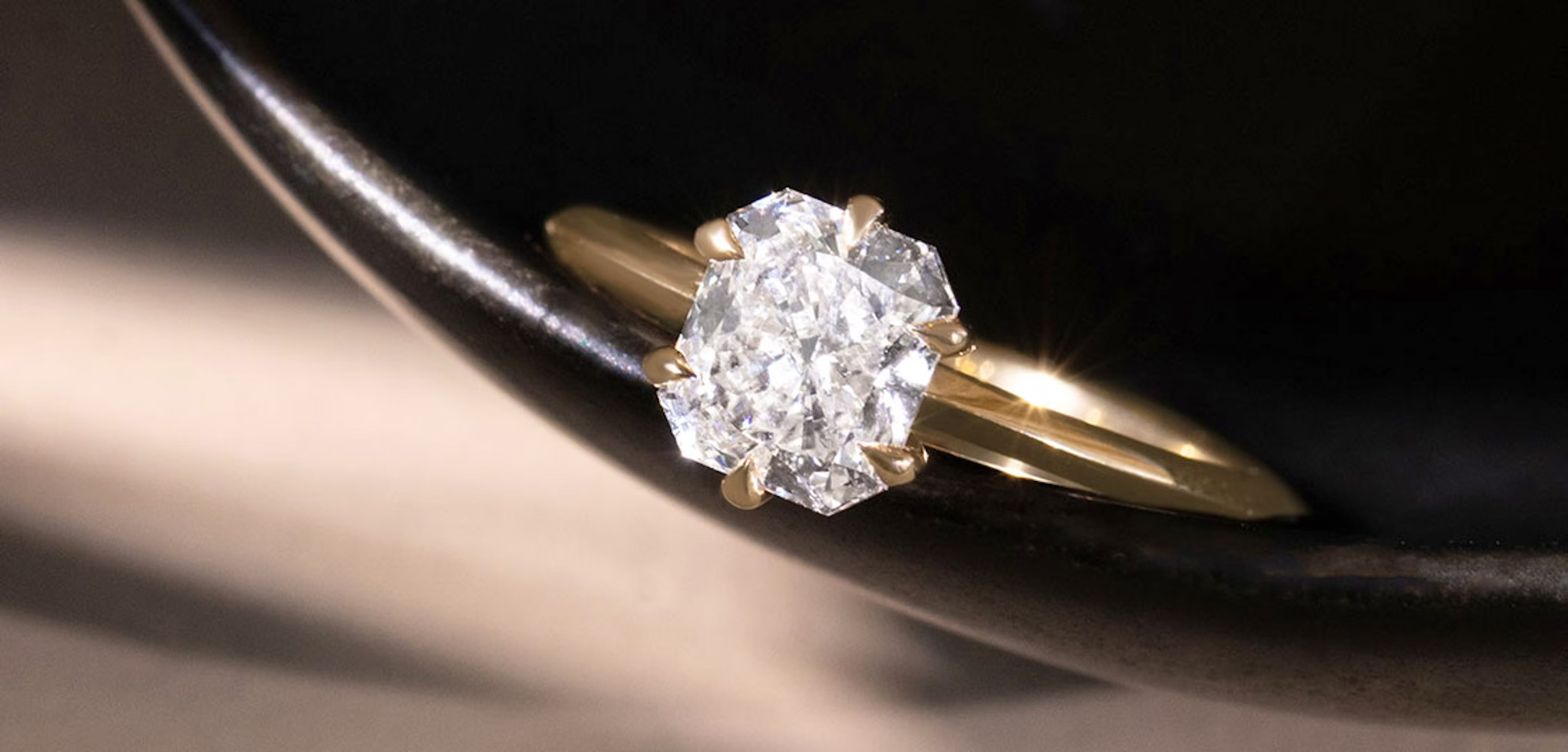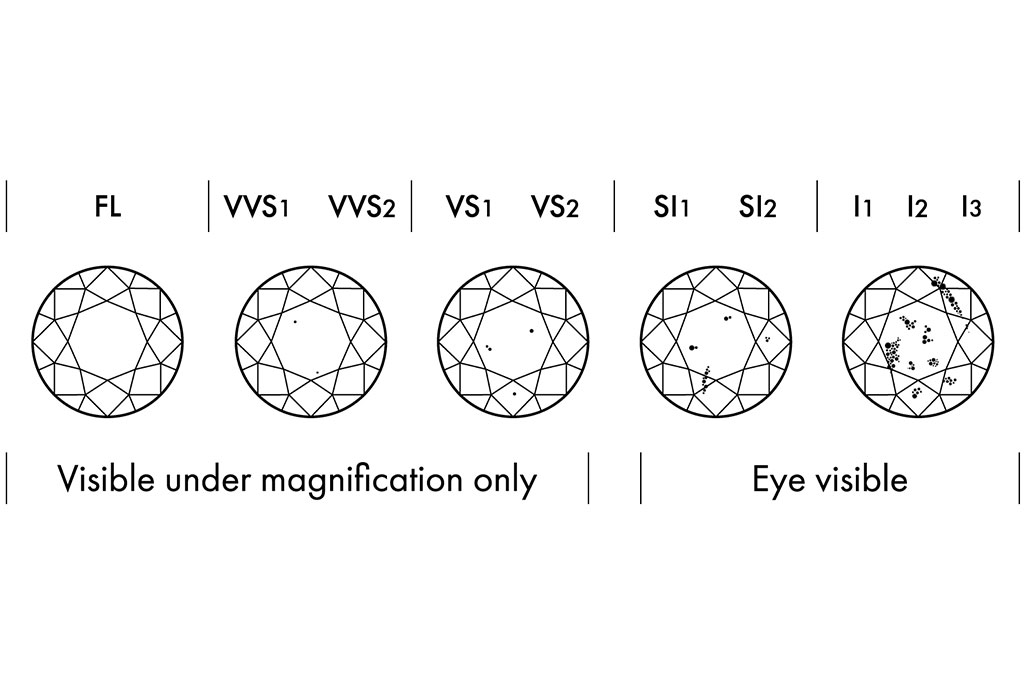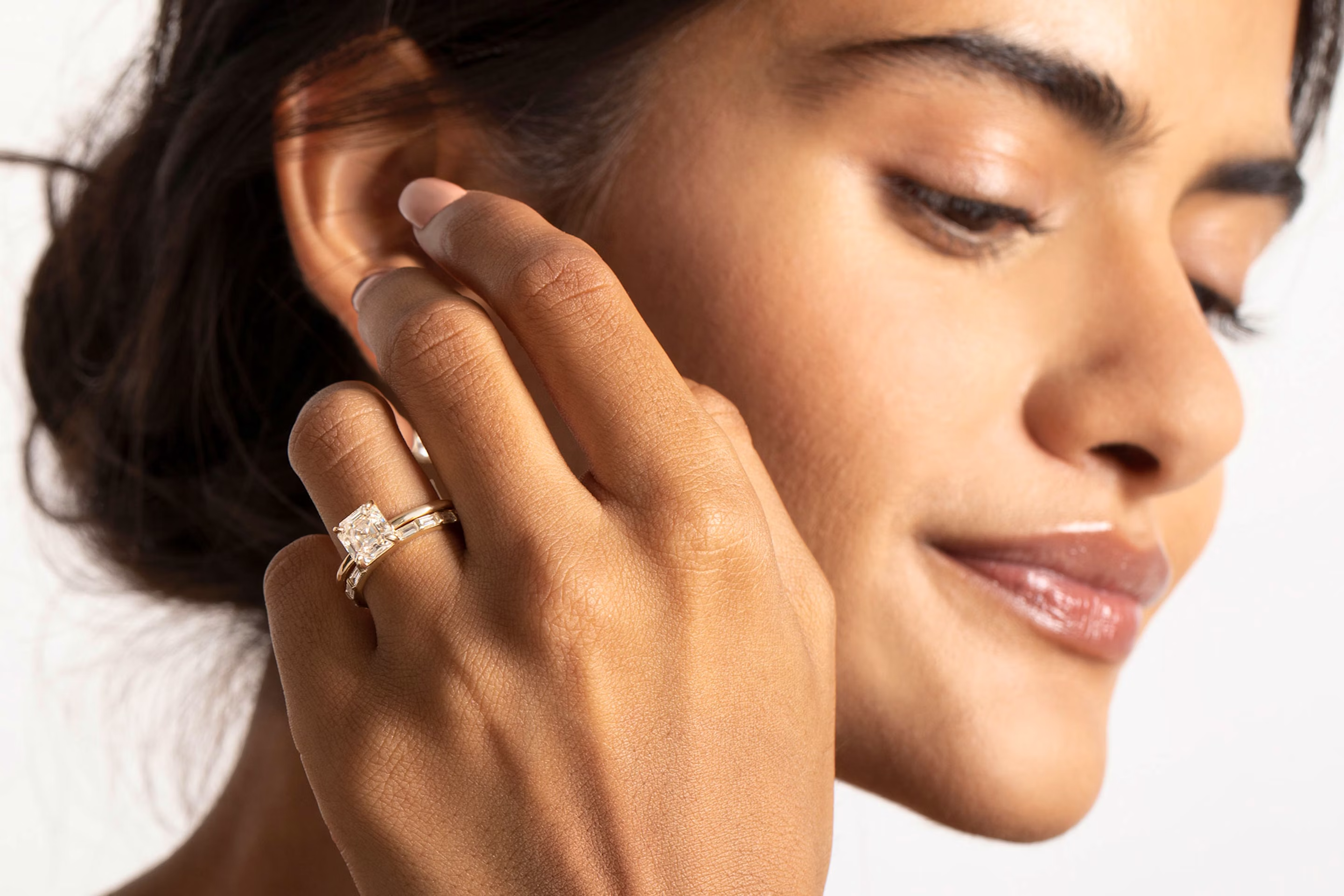Impeccable origin


Understanding Diamond Clarity: Everything You Need To Know Before Your Diamond Purchase
Welcome to our guide to understanding diamond clarity, where we’ll provide you with everything you need to know before your diamond purchase! Out of all of the 4Cs of diamonds - cut, color, clarity, and carat - clarity is the “C” most obscured to the naked eye. Clarity refers to the visual purity of a diamond. Determined by the number of inclusions or imperfections in the stone, clarity is difficult to notice without the help of a magnifier. Read on to discover all you need to know about diamond clarity and how it can help you find your perfect VRAI created diamond.
The importance of diamond clarity
Inclusions occur naturally during the diamond growth process and are what make each diamond unique. Flawless diamonds are rare. The rarer a diamond is, the more valuable it becomes. The majority of diamonds will have slight inclusions or imperfections. While these imperfections are often invisible to the untrained eye, clarity is still important to the overall brilliance of a diamond. Internal spots and lines can affect how light passes through the stone. Inclusions can obstruct the refraction and return of light and can impact how cloudy a diamond appears. Internally flawless diamonds therefore allow more light to pass through, usually resulting in greater brilliance. Imperfect diamonds — the opposite of flawless — will appear dull. Helping you find a VRAI created diamond of high clarity at an approachable price point is our goal.


Diamond clarity chart
Five factors are considered when assigning a diamond’s clarity grade. The size and number of imperfections, their position within the diamond, how they impact its durability, and the noticeable contrast between the imperfections and the diamond itself. As mentioned before, flawless diamonds are extremely rare and therefore rank highest in clarity grade. For a diamond to be deemed Flawless, no inclusions or blemishes must be visible under 10-power magnification. After Flawless, diamonds are graded as Very, very slightly included or VVS1 and VVS2, as well as Very slightly included, or VS1 and VS2. Once again, the inclusions in these diamonds are invisible to the untrained eye. When it comes to Slightly included diamonds, or SI1 and SI2, these flaws become visible to the naked eye. Imperfect diamonds are rated I1, 12, and 13 for their various degrees of visible inclusion.


VRAI created diamond clarity scale
VRAI is proud to offer high clarity grade VS2 diamonds and above. We offer a wide selection of diamonds sustainably grown in our zero-emissions foundry, with high clarity grades of VS2 and above. All of our VRAI created diamonds, including those we select for our engagement ring and fine jewelry designs, are without any eye-visible inclusions in order to deliver maximum brilliance. For diamonds with clarity grades below VS2, our graduate gemologists can provide an eye-clean assessment, as the visibility of the inclusions vary depending on the diamond cut and shape.
Our offerings are graded:
FL: FL diamonds are Flawless with no internal or external imperfections visible to a skilled grader under 10-power magnification
IF: IF diamonds are Internally Flawless but may have small surface blemishes visible under magnification
VVS1 VVS2: VVS diamonds are Very, Very Slightly Included with tiny inclusions that are difficult to see even under magnification
VS1 VS2: VS diamonds are Very Slightly Included with minor inclusions that range from difficult (VS1) to easier (VS2) to see under magnification

Selecting diamond clarity
The higher the clarity grade, the more you can expect to pay for a diamond. Given this “C’s” less visible nature, there is some opportunity to save when selecting clarity. The best value is found in diamonds with inclusions that can’t be seen under magnification—those at the VS level. As with any “C,” exploring different combinations of carat, size, and shape can also afford you added flexibility in diamond clarity and price. Because VRAI is a part of every step of the diamond’s journey — from its creation in our zero-emission foundry to its placement in an engagement ring or fine jewelry setting — our diamonds’ pricing is free from middlemen markups. This means VRAI customers can likely afford high-clarity diamonds at a more affordable price. And our diamonds and engagement rings can be purchased with confidence due to our Lifetime Care Package that includes a Lifetime Warranty.

Diamond clarity & size
Certain diamond sizes are more susceptible to visible inclusions. The larger surface area of higher carat weight diamonds can make inclusions more visible. We suggest increasing clarity grade as you size up in carat weight to maximize brilliance and scintillation. The same can be true in reverse. When choosing diamonds smaller in size or carat weight, inclusions are less visible. This means you can go down slightly in clarity and prioritize higher clarity for your center diamond. Our diamond experts are available by virtual appointment to help you in selecting the right clarity grade for your diamond engagement ring.

Diamond clarity & shape
Some diamond shapes mask inclusions better than others. The facets of brilliant-cut diamond shapes such as the round, cushion, oval, marquise, pear, and trillion shapes may tolerate lower clarity grades as they reflect light from a number of angles. But the large, rectangular facets of step-cut diamonds, such as emerald or asscher shaped diamonds, benefit from a higher clarity grade, as they emphasize transparency and allow you to see deeper into the diamond. Prioritize a higher clarity grade with step-cut shapes.
Learn more about our diamond shapes and the difference that cuts can have on clarity.
Clarity terminology to know
Inclusion: The internal formations of a diamond
- Cavity: An angular opening on the surface of the diamond created by feathering
- Cleavage: A straight crack that can extend to the surface
- Cloud: A group of tiny crystals found inside the diamond
- Crystal: Tiny matter found inside the diamond that can extend to the surface
- Feather: A fracture found inside the diamond extending to the surface
- Internal graining: A white or colored line found inside the diamond
- Knot: A transparent crystal that extends to the surface
Blemish: The external formations on the surface of a diamond
- Chip: A piece of diamond broken at the surface
- Nick: A minor surface indentation along perimeter of the surface
- Pit: A small hole on the surface
Polish line: A small groove left on facets after polishing
We hope that our guide to understanding diamond clarity will help you when making your diamond purchase. But for lingering questions and a look at the VRAI created diamonds meant just for you, book an appointment with our diamond specialists to learn more.